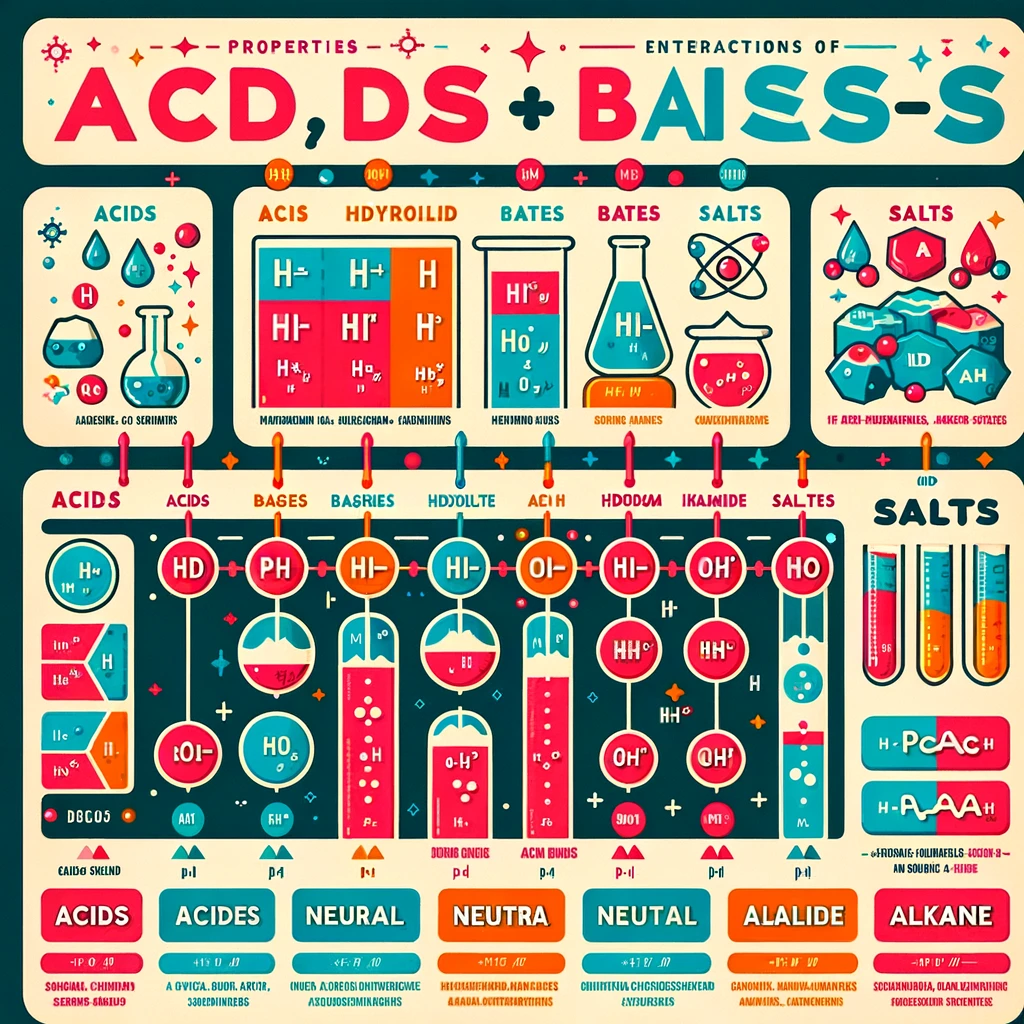
Understanding Acids, Bases, and Salts: Essential Chemistry for Everyday Life and Industry

Acids, Bases, and Salts: Understanding Their Fundamentals
Acids, bases, and salts are fundamental categories of compounds in chemistry, each with distinctive properties and applications that significantly impact various aspects of science and everyday life. This article delves deep into their natures, differences, and interactions.
Acids are substances that release hydrogen ions (H+) when dissolved in water. They have a sour taste and can turn blue litmus paper red. Common examples include hydrochloric acid (HCl), found in the stomach, and citric acid, present in citrus fruits. Acids play vital roles in the human body, industry, and the environment. In industry, acids are used in the manufacture of fertilizers, plastics, dyes, and many other products.
Bases, on the other hand, are substances that release hydroxide ions (OH−) when dissolved in water. They have a bitter taste, a slippery feel, and can turn red litmus paper blue. Sodium hydroxide (NaOH), used in soap making, and magnesium hydroxide, found in antacids, are examples of bases. Bases are crucial in cleaning products, pharmaceuticals, and various industrial processes.
Salts are compounds formed by the neutralization reaction between an acid and a base. This reaction produces water and a salt. Salts are ionic compounds that consist of cations (positively charged ions) other than H+ and anions (negatively charged ions) other than OH−. Common salt (sodium chloride, NaCl), used in cooking, and calcium carbonate (CaCO3), a key component of limestone, are examples of salts. Salts have a wide range of uses in food, industry, and agriculture.
The interaction between acids, bases, and salts is a fundamental aspect of chemical reactions. The pH scale, which ranges from 0 to 14, measures the acidity or alkalinity of a solution. A pH of 7 is neutral, below 7 is acidic, and above 7 is basic or alkaline. This scale is crucial for various scientific fields, including biology, chemistry, medicine, and environmental science, as it affects reaction rates, biological processes, and the environment.
In summary, acids, bases, and salts are essential components of chemistry with significant roles in daily life and various industrial processes. Understanding their properties, interactions, and applications is crucial for advancements in science, technology, and industry.